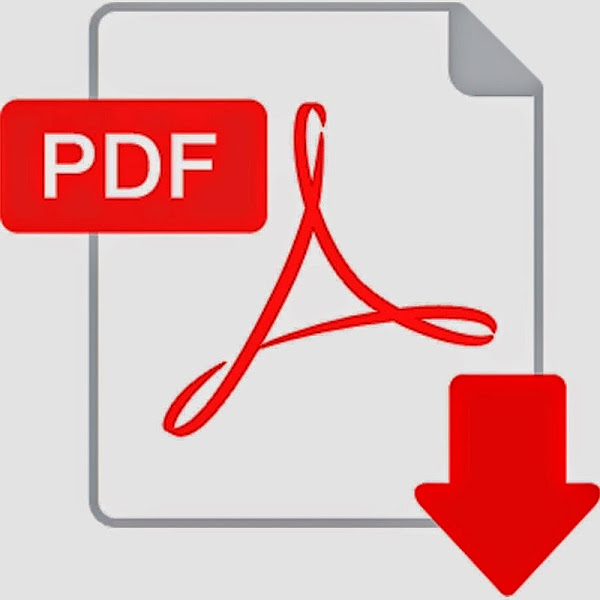— [http://goo.gl/RZpPkN] If we want students to be better writers, they have to write more often, and it has to be engaging –
:: RT: Short, easy and familiar writing in the ESL Classroom http://goo.gl/RZpPkN | #Twitter #KellyGallagher #CharlesWhitaker #PaulNation #LewisWray #English #StudyNotes #ESL #UniversityStudies #Writing #EnglishAsASecondLanguage
This paper focuses on how to scaffold eight-grade students in a short, easy and familiar writing in the ESL classroom at lower secondary school in Norway. It is vital that teachers guide their students to find the purpose of writing a text. In order to find the purpose of writing a text eight-grade students have to decode the writing prompts, which should be clearly exposed to students. Furthermore, word choice and orthography must be also correct. If it is a well-structured writing prompt, it should not need to be explained orally in class. The genre and writing acts must be familiar to eight-grade students. In addition, the roles and audience should be clearly specified in the prompt.
Presenting a decodable prompt for the students.
This is crazy. Instagram, Vine, Facebook, YouTube, Skype, they all have disappeared; the only social media we have left is Twitter.
Using 107 characters, write a tweet. You can write anything that comes into your head. You can also write a message that you want to share with the world.
For example, your tweet can be about 1) describing something, 2) telling someone how to do things, or 3) convincing someone of doing something. You decide what to write about.
You can write as yourself or pretending to be someone else, whoever. Remember that everybody will be able to read your text.
Start your tweet as follows:
RT: [your 107 characters go here]
You should have at least 15 characters left so your tweet can be answered, commented or retweeted.
Insulting and cyber-bullying is not allowed. Use only characters. Do not include images or links. Use standard grammar, spelling, and punctuation in your short text.
Finish your tweet with a creative, funny hashtag #
You may use the following hashtags to spark your imagination:
#ConcertsRock #MusicMakesPeopleComeTogether #BirthdayParty #WhatAdescription #JustAwesome #ExplainItToMe #Information #TeachMeHow #IamLost #ConvinceMe The latter assignment allows for choice, and this “generates writing motivation” (Carragher, 2006, p. 91). Students can write about movies, song lyrics, ads, newspapers, favorite food, an ideal vacation, favorite app, or whatever they can think of. They are informed that this is only the first draft, which will not be graded. They will develop the first draft during the next class hours, which will be graded. After having finish the first draft, we either share out as a whole group or pass the papers to be read in smaller circles, and students will get meaningful feedback from both the teacher and their peers. They will be “encouraged to offer their own ideas and responses; they collaborate” (Whitaker, 2006, p. 1; Carragher, 2006, pp. 13, 51, 86, 162-163).
In a previous class hour students have focused on reading and vocabulary learning, knowing that one of the major barriers in the ESL classroom is the vocabulary size and its complexity. Students will get the necessary target vocabulary they can use in the next classes, providing them with high-frequency words or the most useful words in English, as it is recommended by Paul Nation in his six books of the series “4000 Essential English Words” (Nation, 2009).
When I was planning my writing activity for my nineteen students, I started by asking myself: “what are they going to write about next week?” The aim I had in mind when I asked myself that very first question was whether they would hand in a final product and if I would grade their writing work. I decided we would start the writing activity with a first draft, which would be organized individually because they have the choice of publishing their text or just keep it for themselves, and that decision is better done as individuals (Carragher, 2006, p. 12).
The writing activity will take place during a two-week period. As stated above, students will write an informal text, departing on Twitter or if they prefer, a tweet-like text, they will develop their previous text on Facebook or Facebook-like format, in a second class hour, and finally they will write a more extensive text in a blogpost.
The purpose of writing the first draft in a tweet-format is to allow students to draw on the writing skills already developed in their native language on social media. Now, students are allowed to expand their writing ability in the ESL to an authentic audience, that is, avid Twitter-readers, who invest valuable time in commenting, answering and retweeting, rather than writing an assignment to please their teacher.
This assignment correlates to the requirements of the English subject curriculum (LK06); it covers three main areas in learning the English language. Students will 1) learn English by using “different situations, working methods and learning strategies”, and “comment on own work.” It also covers the 2) oral communication area; students are expected to “understand and use a general vocabulary related to different topics” and “express and justify own opinions about different topics.” 3) In our written activity we will “choose and use different reading and writing strategies [...], general vocabulary related to different topics [...], use own notes and different sources as a base for writing,” such as templates, model-writing. They will be able to express ideas and opinions in well-structured and coherent texts (LK06, pp. 8-9, revised version 2013).
Writing our first draft.
I am displaying Twitter with the projector while my students walk in carrying computers. They log in to Twitter. I start modelling my writing text, the simulated instruction, because “[m]odelling a piece of writing in front of [my] students also gives them a structure, a template or a frame for their own writing.” (Take Credit, 2015, Ulriksen et al., Lesson 4; Normann, 2015, Lesson 3, video: 02:34). I will not assign what to write, but I rather guide them. I will teach them how to write, I will show them “explicit writing instructions”, and so “their skills” [don’t] “stagnate” (Gallagher, 2006, pp. 9, 13, 15, 48).
Below is my first-draft tweet (written in front of the students):
Details about specific genres will be discussed with the students in the coming sessions, but today I want them to focus solely on short, easy and familiar writing. I want them to feel comfortable to the point that in the future they literally come through the door asking what they are going to write about.

— REFERENCES | FURTHER READING:
• [1] APA (2012). “
The American Psychological Association.” 6th ed. (
Publishing and Editing)
• [2] CHICAGO Citation Style (2010). “
The Chicago Citation Style.” 16th ed. (
Publishing and Editing)
• [3] Gallagher, Kelly (2006). "
Teaching Adolescent Writers." Stenhouse Publishers.
• [4] Lewis, Maureen & David Wray (2002). "
Writing frames: scaffolding children’s non-fiction writing in a range of genre." University of Reading.
• [5] LK06, English subject curriculum, revised version (Aug. 2013);
The Norwegian LK06, in English;
The Norwegian LK06, in Norwegian. Utdanningsdirektoratet (Norwegian Ministry of Education and Research).
• [6] MLA (2009). “
Handbook for Writers of Research Papers.” 7th ed. (Publishing and Editing)
• [7] Nation, Paul (2009). “
4000 Essential English Words.” Compass Publishing.
——— Nation, Paul (2009). “
4000 Essential English Words”, book 1. Compass Publishing. ISBN: 978-1-59966-402-6
——— Nation, Paul (2009). “
4000 Essential English Words”, book 2. Compass Publishing. ISBN: 978-1-59966-403-3
——— Nation, Paul (2009). “
4000 Essential English Words”, book 3. Compass Publishing. ISBN: 978-1-59966-404-0
——— Nation, Paul (2009). “
4000 Essential English Words”, book 4. Compass Publishing. ISBN: 978-1-59966-405-7
——— Nation, Paul (2009). “
4000 Essential English Words”, book 5. Compass Publishing. ISBN: 978-1-59966-406-4
——— Nation, Paul (2009). “
4000 Essential English Words”, book 6. Compass Publishing. ISBN: 978-1-59966-407-1
• [8] Whitaker, Charles (2006). "
Best Practices in Teaching Writing." Write in the Middle: A workshop for Middle School Teachers. Retrieved on Feb 2015 from:
http://www.learner.org/
SHARE: FACEBOOK | TWITTER
Teacher Training and Resources : Using Models in Writing Instruction. (English audio) ::






Feedback / professor's comments:
ResponderEliminarConcrete writing prompt, suitable for own students – short, easy, and familiar writing:
You use a medium (Twitter) most of your students would be intimately familiar with, and give them some freedom of topic. The prompt itself is easily understandable, and seems very suitable for your described age group.
Explains the prompt and organization of classroom work:
You explain your prompt, as well as how you would use it in your classroom, in a clearly understandable manner.
Discussion of why, with references to online lessons/course material:
You refer several of the set texts in your discussion, using these texts to your advantage. The use and discussion of Gallagher is especially good here. You also diversify the discussion by discussing several different aspects of your writing prompt, which is very good.
Explanation and justification of own role as an active writing teacher:
You mention modelling as a way of being an active writing teacher, and use the set texts to justify why you would choose to do so.
Proper use of sources/list of references:
Your citations are consistent.
Length (approx. 1 000 words):
Your text seems to have the suitable length.
Written language competence:
You structure your text well, and your introduction is especially good. I would have liked a clearer conclusion, as the end of your text came as a surprise. In terms of language, you communicate well and efficiently.
Other comments:
The assignment is approved.
FA186F8BD3
ResponderEliminarkiralık hacker
hacker arıyorum
kiralık hacker
hacker arıyorum
belek
1178F2923E
ResponderEliminarTakipçi Satın Al
M3u Listesi
Erasmus
Pokemon GO Promosyon Kodu
Viking Rise Hediye Kodu